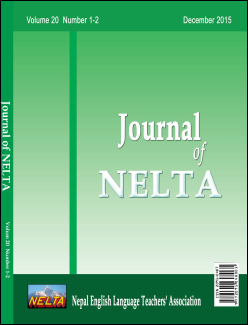Content and Language Integrated Learning for Nepalese EFL classes
DOI:
https://doi.org/10.3126/nelta.v20i1-2.19779Keywords:
Content and language integrated learning, Content subject, Curricular contentAbstract
A common understanding of teaching English in Nepalese context implies teaching the prescribed textbook lessons and learning means following the teachers’ instructions. The school on the one hand, grades the students’ achievement according to the score they have scored. The parents, on the other, evaluate their children’s learning according to how beautifully they have written on their notebooks and how fluently they speak in English. This traditional practice of teaching and evaluating learners has paralyzed our system of teaching and learning. Therefore, it is high time we shift our practices to a more productive approach to teaching. Content and Language Integrated Learning (CLIL) meets the present needs. This paper deals with the ways CLIL is useful to the Nepalese context. In addition, it also puts light on the materials used in CLIL lessons, teacher’s and students’ roles and assessment in CLIL.
Journal of NELTA, Vol 20 No. 1-2, December 2015, Page: 71-79
Downloads
Downloads
Published
How to Cite
Issue
Section
License
© Nepal English Language Teachers’ Association (NELTA)
Authors are required to transfer their copyright to the Nepal English Language Teachers' Association (NELTA)
The Journal of NELTA is copyright by Nepal English Language Teachers’ Association (NELTA). Apart from citing/referencing in academic works, no part of any materials may be reproduced by any process without prior written permission from its copyright owner – NELTA. Requests and enquiries concerning reproduction and rights may be addressed to NELTA or the editorial board at neltaeditorialboard@gmail.com.




